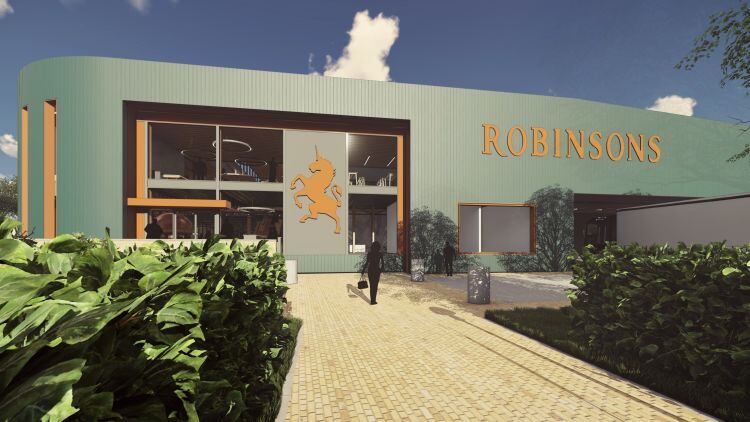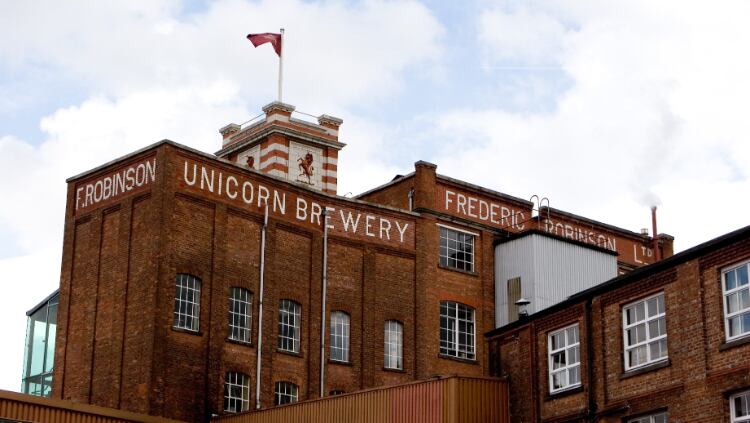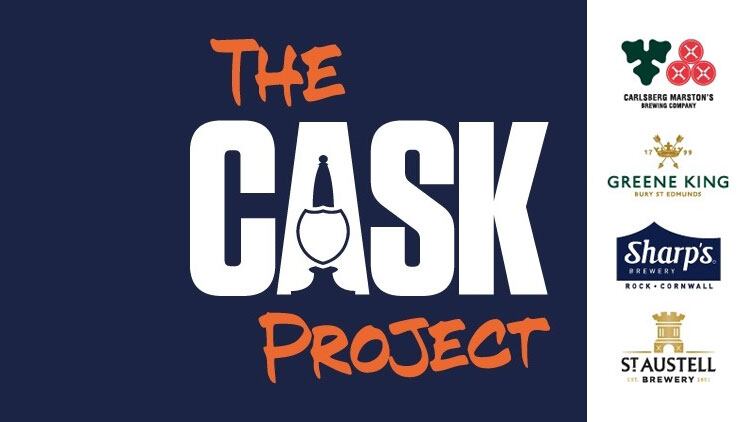Of course, Oliver Robinson and David Bremner of brewer and pub operator Robinsons Brewery in Stockport were always going to agree with that statement, which came from this southern-based journalist.
Why is that though? “There is a very different way of serving cask beer in the north and the south,” explains joint managing director Robinson. “We use a sparkler up here so we get a much tighter, creamier head.” For the people of the south, a sparkler is a small fitting that is fixed to a cask beer spout.
Robinson continues: “Interestingly, when any southern brewers promote cask beer, they’ve always got a head on the pint but when you go down south and get served, it’s always flat. It’s a smoother drink in the north as well.
“Interestingly, when I drink beer down south, even though the quality is generally good, it’s a very different cask experience. When we have fellow brewers from the south come up to the north-west they’re really impressed because it is a different way of drinking – there isn’t a right or wrong, it’s a regional difference. But I am starting to see, in some of the home counties, more and more pubs using a sparkler to serve cask beer.”

Director of marketing Bremner says: “Also the big brewers in between [the north and the south] have stopped brewing cask. You can’t find a pint of Ansells or Bass. There are so many brewers that dominated from Burton-on-Trent that now don’t focus on cask beer at all. You’ve got some lovely brewers in the Midlands like Everard’s but, really, there is quite a gap.
“If you come to the north-west and there’s probably four around the Manchester area: us, Holts, Hydes, JW Lees and Thwaites is a little bit further north so it’s quite a unique market in the north-west of England as well.”
Consistency needed
Bremner adds: “If you were Guinness, you want to be pretty sure that anybody in Britain is going to have exactly the same pint of Guinness. If you go into the cask category you’d say ‘we’re shooting ourselves in the foot here’, it’s a completely different experience north to south.
“I was down south and paid £5.70 for a pint of 3.7% ABV beer but it came out flat. And I thought ‘I’ve got to bring a sparkler next time because it would nearly be worth it’.”
Robinson gave an update on the announcement in January last year that a £12m investment would be made to relocate all operations to one site, including the installation of a new brewhouse.
“We’re now in a position where we’ve got our new cask racker and new kegging line, which we’re commissioning in a temporary location so we can decommission our existing kegging and cask racking line.
“We’ll clear that area from the end of this month (February) and then, in October, we’ll hand it over to SSV (Stainless Steel Vessels – a brewery installation business), which will bring in all the brew kit –about 40 containers coming over from China – install it and, hopefully, we’ll be playing with that before the end of this year and then commissioning in the first quarter of 2024.”
He explains the brew plant will allow Robinsons to brew up to 60 barrels but as little as 30 and it will then relocate its cask racker and our new kegging line to be under one roof at Bredbury, which means the end of brewing at the famous Unicorn Brewery in Stockport.
“Part of our agreement on all of this was that to be able to justify brewing,” Robinson adds. “Brewing is an expensive thing for family brewers to do but it’s part of our DNA and we’re absolutely committed to continuing to brew as we’ve always done but it would be cheaper for us to stop brewing, become a pub company and buy our beer from somewhere else.
“But that’s not how we how we roll. We’d lose our identity so it’s really important we continue to brew and it’s also really important we continue to brew as much beer as we possibly can for our own pub estate. We’ve set ourselves an ambition to make sure one in three pints of beer sold in our pubs is brewed by us – 35% is the target actually.”
He adds the business is under no illusions of the challenges it faces in the cask beer category and it must try to drive the 18 to 35-year-old segment to start drinking its cask beers but Robinson also knows there is demand for kegged beers.
The new brewery promises to give greater flexibility for product development in cask and keg to help drive towards that target figure of 35% of own-brewed sales. An unfiltered 4% ABV lager is about to go one trial in more than 35 of its pub estate.
Size matters
Robinsons will have the luxury of using two brewhouses at once to ensure consistency is achieved and it will be brewing at the new site before it tells anyone it is doing so.
The new facility will allow it to make a smaller brew length therefore allowing it to make some innovative beers.

Bremner explains: “We’ve got 260 pubs, so [for the estate] our current brew length makes effectively 240 nine-gallon barrels and that means we have to play fairly mainstream when it comes to innovation.
“However, the new brewhouse will cut that down to 120 nines or the equivalent number of 30-litre kegs if we want to do that. The plan as we exit 2023 is to get more experimental styles of beer such as porters or flavoured beers.
“The other thing that’s quite exciting about the new brewhouse is it will have the ability to fill pins (4.5 gallon/20-litre containers). We’re investing several £100,000 into pin population. Our average handles on the bar dropped from 4.3 to 2.7 during the pandemic so if you go into one of our pubs and see two handpulls that has a detrimental knock-on to interest in the cask category.
“Pins will not only allow licensees to put that third and fourth handpull back on the bar, which has a real linear effect on volume performance but also we have put Old Tom in pins at Christmas and our pubs have previously taken it, so we know there’s an interest in pins.”
Robinson adds that although pins are the right way to go, the company must offer a greater choice in beer styles. One likely candidate is a 3.4% ABV pale ale, which was trialled last year, and is set to be launched in April.
Trial and error
Testing is vital Robinson says. Feedback is collected and then a beer could become a permanent additions and others may be used as seasonal brews that may not return.
“We’re looking at tomorrow’s drinker, even though people are looking for some stronger keg innovation, what we’re also seeing is people choosing from an ABV point of view and, in actual fact, lower strength beers. With the changes that are coming into force in August in terms of duty on beers that are lower than 3.5%, this is another reason why we will put out a 3.4%.”
The King’s coronation in May offers an opportunity for a new beer. A pump clip for the beer the brewer created for the Queen’s coronation in the 1950s has been found and Robinsons is looking to use and evolve it because “we need to tell the story that this is the same pump clip we used for the Queen’s coronation”, says Robinson.
“Even though we’re investing more than £8m our new brewery and we need this innovation, we mustn’t be afraid to go back to our past and say, ‘look, this is what we created for the Queen’s coronation and we’re going to replicate that for the King’s coronation’. We also did the previous coronation before the late Queen as well so we’ve got the history, the imagery and the archives to be able to tell a great story.”
Although the cogs are beginning to turn on the idea, there are also plans to do something in packaged format too for the regal celebration.
There’s clearly plenty going on and work on its new brewery is the next stage in the family brewer’s development that is sure to help it remain a powerhouse in the north.



